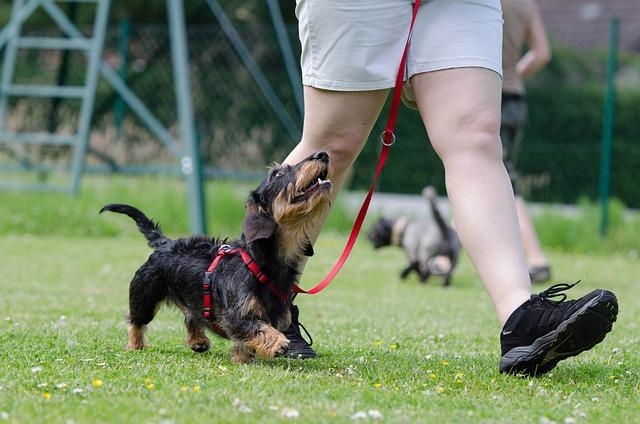Welcoming a furry friend into your home brings joy, laughter, and a sprinkle of chaos. As dog owners, we all dream of having a well-behaved companion who can impress with a repertoire of delightful tricks. Whether you’re a seasoned pet parent or a first-time dog owner, teaching your dog new tricks is not only fun but also a fantastic way to bond and communicate with your canine companion. In this article, we’ll explore the top 10 tricks that can transform your dog into the star of the neighborhood. With patience, consistency, and a pocketful of treats, you’ll discover how these tricks can enhance your dog’s confidence and obedience, making every moment together more enjoyable. So, let’s embark on this exciting journey of learning and wagging tails!
Master the Basics with Simple Commands
Before diving into the more complex tricks, it’s essential to establish a strong foundation with some basic commands. These simple commands not only build a trusting relationship between you and your dog but also ensure their safety in various situations. Start with sit, a command that helps in calming your dog and preparing them for further instructions. Once mastered, progress to stay, which is crucial for controlling your dog’s movement and ensuring they remain in place when needed.
- Come: Perfect for recall, teaching this ensures your dog returns to you even in distracting environments.
- Leave it: Essential for preventing your dog from picking up unwanted or dangerous items.
- Down: Useful for reducing excitement levels and encouraging a relaxed state.
Consistency is key. Practice these commands regularly and reinforce them with positive reinforcement, such as treats or affection. This approach not only makes learning enjoyable for your dog but also strengthens your bond, paving the way for more advanced tricks.
Strengthen Bonds Through Positive Reinforcement
Creating a loving environment for your furry friend begins with understanding the power of positive reinforcement. By rewarding your dog for desired behaviors, you not only encourage good habits but also deepen the emotional connection between you both. Dogs thrive on praise and affection, so be sure to use treats, verbal praise, or a quick game of fetch as a reward.
- Consistency is Key: Make sure to be consistent with your rewards. This helps your dog understand which behaviors are appreciated.
- Timing Matters: Offer the reward immediately after the desired action to ensure your dog makes the connection.
- Variety of Rewards: Mix up the types of rewards to keep your dog engaged and motivated.
By focusing on rewarding good behavior, you’ll find your dog is more eager to learn and perform tricks, all while building a stronger bond that is rooted in trust and positivity.

Tackle Advanced Tricks for Mental Stimulation
Engaging your dog’s mind is just as crucial as keeping them physically active. To truly challenge their cognitive abilities, consider incorporating some advanced tricks into their routine. These activities not only stimulate their brains but also strengthen the bond between you and your furry friend.
- Play Dead: A classic trick that requires patience and precision. Use a treat to guide your dog into a lying position, then gently roll them onto their side, rewarding them for staying still.
- Weave Poles: Set up a series of poles or cones and teach your dog to weave through them. This not only enhances their focus but also improves their agility and coordination.
- Back Up: Teaching your dog to walk backward is a fun and challenging exercise. Start by standing in front of them and use a treat to guide them backward, gradually increasing the distance.
Remember, patience and positive reinforcement are key. Celebrate small victories and enjoy the learning process together. With consistent practice, these tricks will become an enjoyable part of your dog’s repertoire, providing them with the mental stimulation they crave.

Troubleshoot Common Training Challenges
Training your dog can sometimes feel like an uphill battle, but with patience and the right approach, you can overcome common hurdles. One frequent issue is lack of focus. Dogs, especially puppies, are easily distracted by their surroundings. To combat this, choose a quiet location for training sessions and gradually introduce distractions as your dog becomes more adept at the commands.
- Consistency is Key: Ensure that everyone in the household uses the same commands and rewards to avoid confusing your dog.
- Short Sessions: Keep training sessions brief, around 5-10 minutes, to maintain your dog’s attention and enthusiasm.
- Positive Reinforcement: Reward your dog with treats, praise, or playtime immediately after they perform a desired behavior.
Another common challenge is overcoming stubbornness. Some dogs may resist training due to stubbornness or anxiety. In these cases, it’s crucial to remain calm and patient. Use gentle encouragement and gradually increase the difficulty of the tasks. If your dog seems particularly anxious or resistant, consider consulting a professional trainer for personalized guidance.

